For our last full day in Dingle, we decided to do the Slea Head Drive to the point of the peninsula. Our hostel manager had highly recommended it, and I was like, why not? Our kids are highly susceptible to motion sickness and the subsequent barfing. Why not take them on a cliff road drive for a few hours? Nothing bad will happen, right?
We woke up to a slightly overcast morning and had our breakfast leisurely. We had superficially met several other hostel guests over the course of the week and although they were generally couples or singles, there were a few families (with grown children), and a family with a baby and a young boy. Most of the guests stayed only for a day or two before moving on, sometimes catching the bus to Dingle or walking behind the hostel over to Inch Strand with their big backpacks. All of the guests that we met were not Irish but German, Swiss, Polish, and Italians. It was really fun and interesting for the kids to attempt to interact and communicate with the other guests who’s English skills were much better than our foreign language skills. Lulu is especially overly friendly and would go up to people having their breakfast and chat.
After breakfast was all done and we were all packed with snacks, barfing bowls, and spare clothes, we loaded back up into the car and headed back into Dingle. The Slea Head Drive begins at the very end of the Dingle village is really the one and only road that snakes along the edge of the peninsula. We passed all the shops and the Dingle Aquarium and headed out onto the Slea Head road. We passed a pretty area called Ventry and then it started to get a bit more dicey.
Although the terrain was certainly beautiful, the drive turned more in to what I can only describe as “cliff” driving. It was cliffs on one side and a measly stone wall on the other. Although, maybe a stone wall is better than a little metal barrier. The worst part is that road is definitely narrow, but still shockingly a two-way road which meant that if you saw an oncoming car, you had to find a little spot where the road might widen slightly or have an extra bit of grass where the cliff side curved away from the road to pull over slightly so the other car could squeeze past. See the photo below? See how the car ahead is taking up THE WHOLE ROAD. The width of the road is literally just wide enough for ONE VEHICLE. I spent the whole drive anxiously anticipating an oncoming vehicle coming around every corner.
On our way, we stopped at interesting house with cars parked out front and what looked like a cafe. We checked it out inside, and it turned out to be a tiny prehistoric museum attached to a small cafe. We decided to pass on the museum but we did pass around some snacks in the car since everyone seems to be suddenly hungry.
Famine Cottages
We continued on our journey and came across signs for The Famine Cottages which seemed interesting and related to stuff the kids had learned in school about the The Great Famine in Irish history.
We parked the car in a little lot and then walked up a tiny stone building, not larger than a tiny shack, that had a little window. An older Irish woman sat in the darkness of the little building and she explained to me what the little plaque already stated, emphasizing that our admission included a small bag of feed for the animals on the property. The children were very excited about the idea of feeding animals and she gave each of them a small sack. They ran ahead up a steep path stopping to scatter some feed to a donkey and some sheep and goats.
We made it up to the top of the hill and there were a cluster of different buildings and we seemed to be the only people wandering around. We entered the largest building first and encountered a interesting room that was obviously the kitchen, staged with period furnishings and a creepy boy perched in the loft. We went through each room and it made me remember the Old Bergen Museum in Bergen, Norway, where J and I honeymooned. I remember going into a tiny Norwegian home and the guide described how the one room house typically would hold six people – the parents sleeping in the main room and 4-6 children would sleep upstairs in the tiny loft.
As we continued through the buildings, we read the different plaques explaining who the residents were and the purpose for different buildings. We read about their difficulties and tragedies and imagined the meager existence of the people who lived here during the Great Famine.
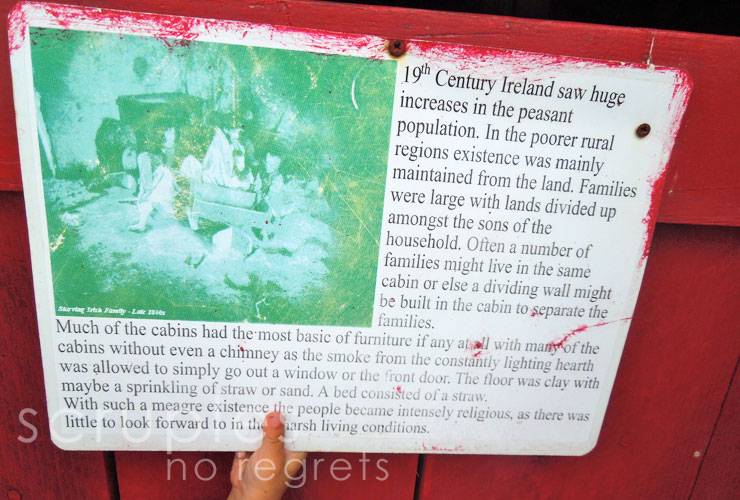

We passed a beehive hut behind the main house in an alley. A beehive hut is named so for it’s beehive shape and not for it’s inhabitants. A plaque described that this beehive hut was where the family would keep it’s pig and noted that it was over 800 years old!

Beehive Hut, The Famine Cottages, Dingle, Ireland
The stories of the inhabitants of different buildings were fascinating and tragic. It seemed remarkable that they knew exactly who lived in the houses and their situations. The Kavanagh family who owned the big house eventually emigrated from Ireland unable to sustain a life there. I imagine the church was the record keeper here and was able to provide the names and details of who lived in the buildings at the time. The rooms were tiny and it was hard to imagine several different families housed in each of these shacks during the harsh and wet Irish winters on this western peninsula.
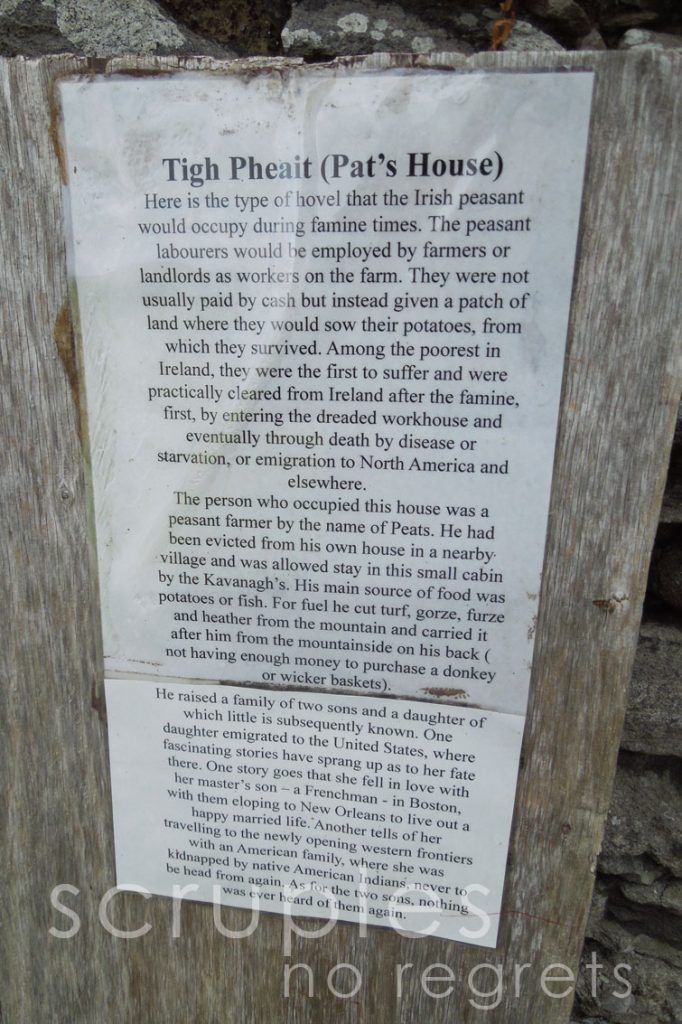
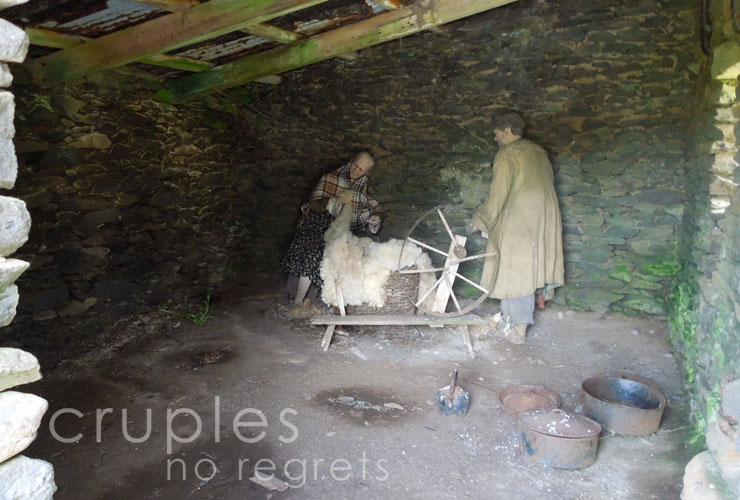
After we visited with the sheep a bit more and visited the graves of some of the children who died during the Famine, we headed back to the car and were back on the road toward Slea head. It was a white knuckle drive to the tip of Slea head as we weaved back and forth along the edge of the cliffs, rocks to our right and the sea below us to our left. Sometimes, the rock face would open up and we would see a group of homes clustered together. At one point, we cross over a bridge that took you across a stream of water erupting from the rocks.
Slea Head
When we finally reached the point, there were a few shops and a pub and the road opened up a bit. We followed the other cars and headed down a steep hair pin (single lane for two-way traffic again) to a small carpark. We luckily were able to nab a spot as someone pulled out and we all got out of the car, anxious to stretch our legs. There is a tiny beach down there as well. Everyone zipped up their hoodies as we left the carpark and started up the narrow trail along the edge. It was a bit nerve-wracking as I watched the children scamper ahead. Oblivious to any danger, they followed J who had a firm grip of Lulu’s hand. I watched, slightly worried in that way you become once you are a mother, aware that what seems like an innocent adventure could become deadly if anyone started messing about, slipping and rolling down that very sleep slope down to the cliffs to our left.
We made it out to the point and enjoyed the magnificent views for a few minutes. They hid out in a strange cement building and scampered around on the top. For my peace of mind, we headed back toward the carpark over the grassy trail NOT next to the cliff edge so that I didn’t have to suffer images of the children tumbling down to the water below. We got back into the car in the now crowded carpark, glad that I had taken the time to back into our spot so that it was easy to pull out (the Irish seem to spend a lot of time backing into car parking spaces as opposed to pulling in. Maybe it’s because the parking can be monstrously tight, small, and impossible to get into.
We decided to drive back the same way we came rather than follow Slea Head Drive all the way around the tip to where it would connect back at the west end of the Dingle village. I had promised the kids one last fun dinner in the village and ice cream and we decided to go into this place on the main stretch that boasted a plastic 99 cone outside the front door. It served fish and chips (all sorts of fish but I was unable to distinguish the difference between the types beside the price) and all sorts or fried foods (chicken goujons, sausages). Most importantly, they served an interesting assortment of ice cream concoctions which included ice sundaes and milk shakes. Obviously, the most important part of the meal! We waited for our food in the back of the restaurant and after a bit, the food arrived. Shortly after we had gotten our seats (the restaurant had been fairly empty when we arrived), the seats started the fill up and by the time our ice cream arrived, the place was packed! We were very glad that we missed the crowds!
After enjoying our ice creams (and beer for J), we took a leisurely stroll back through the village one last time before circling back to the large (but very busy harbour parking). We then headed back to the hostel for our final night, enjoying the cockle-doodle-dooing of the resident cock for one final time the next morning before returning home with everything we had brought with us plus a bucket of sea shells and tiny dolphin soft toys.


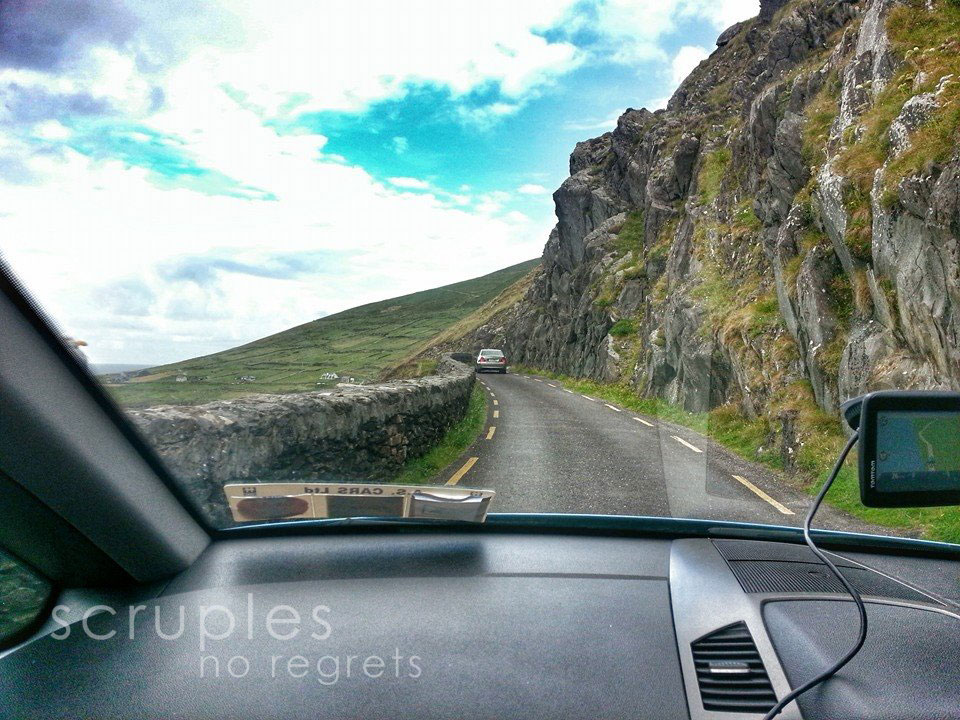
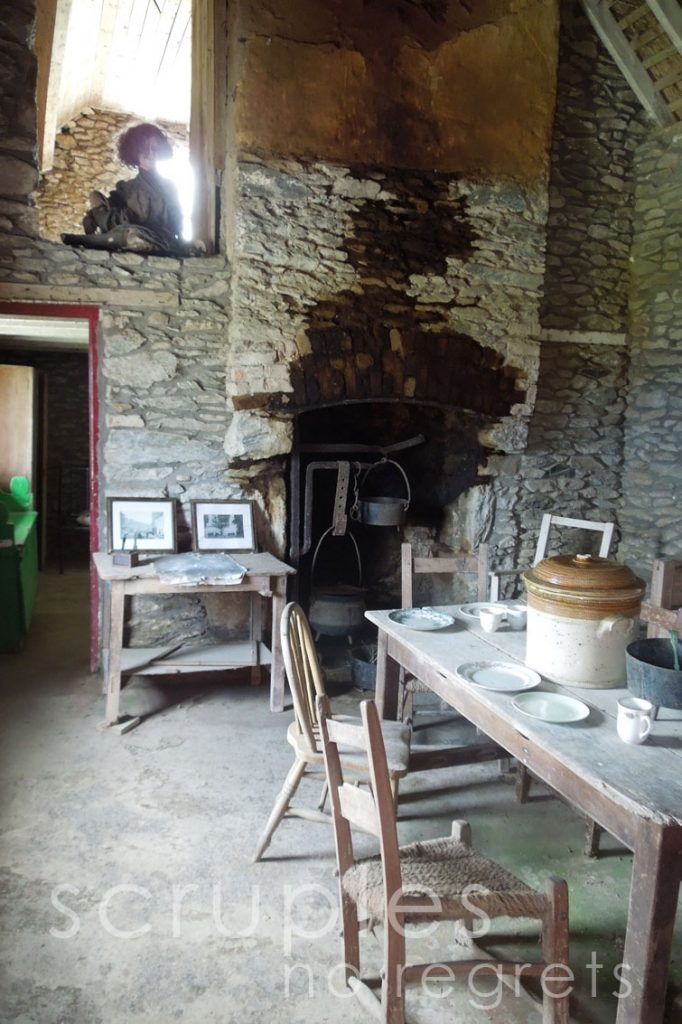
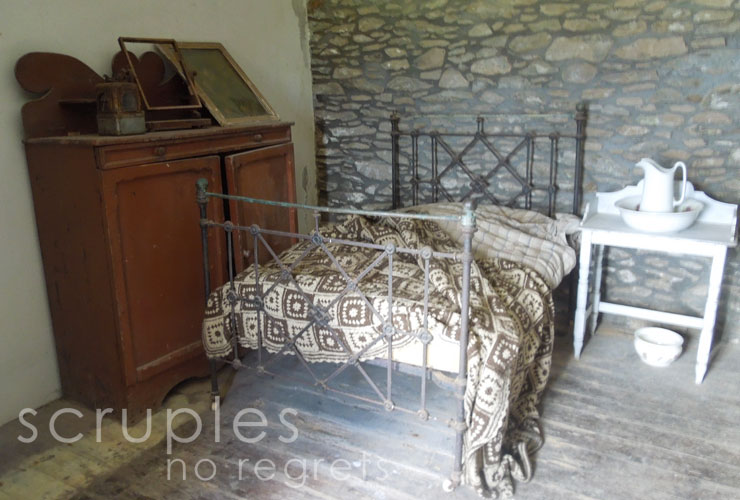
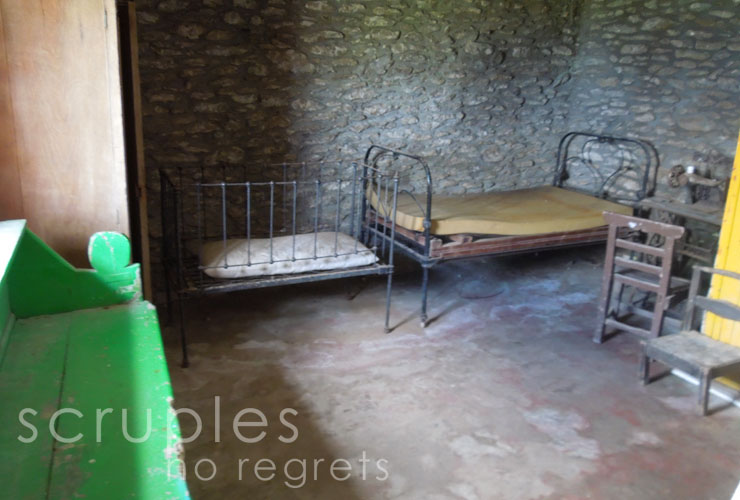
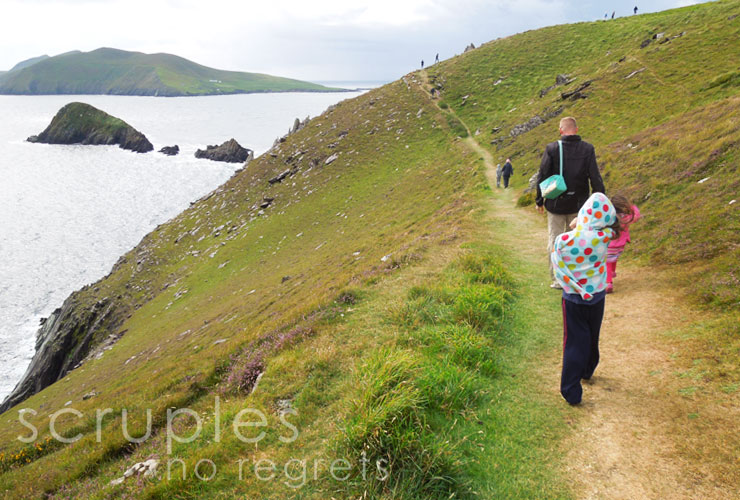

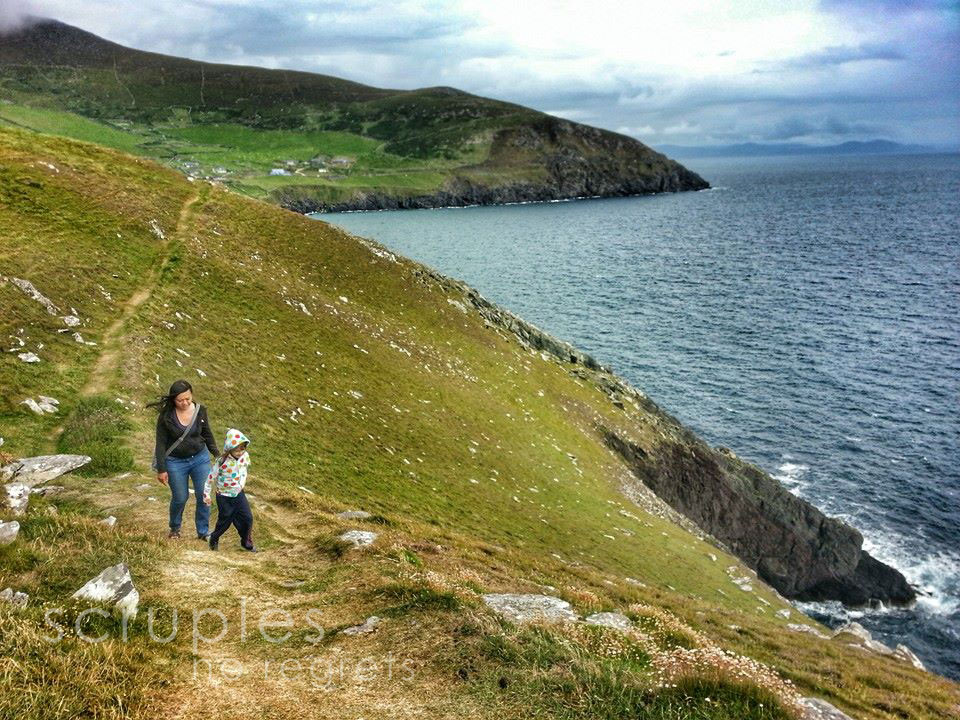
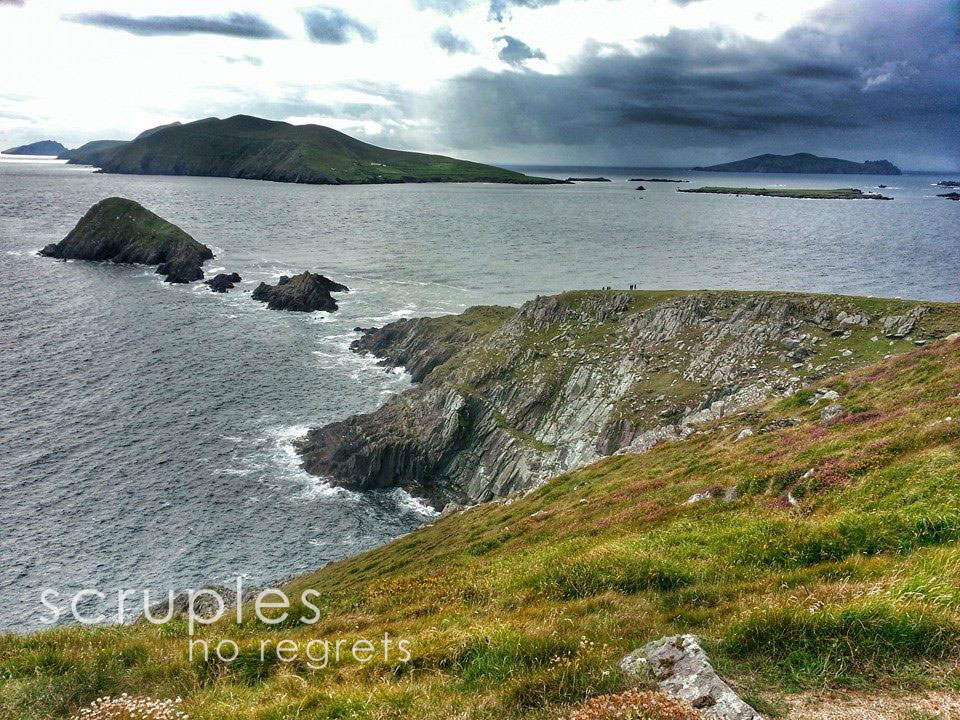
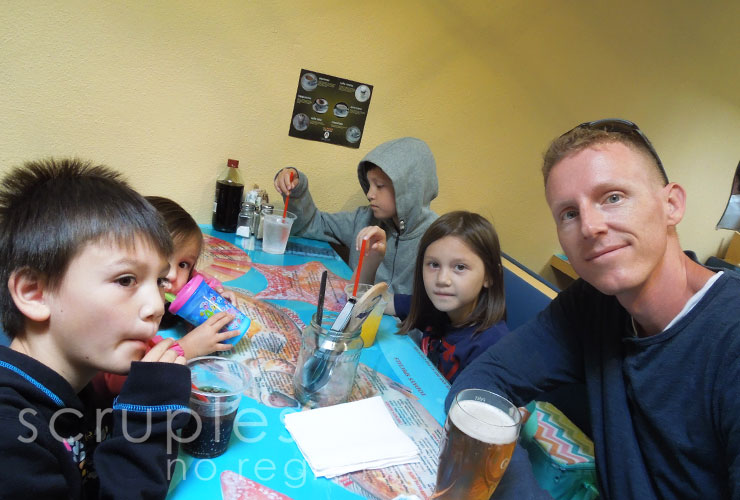



Leave a Reply